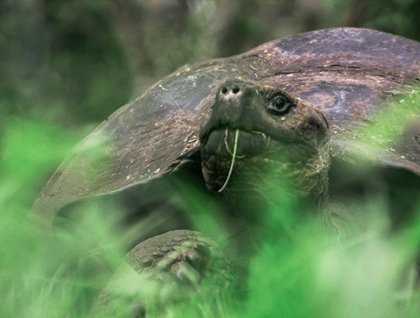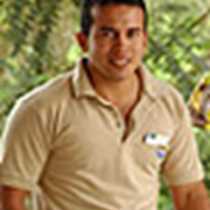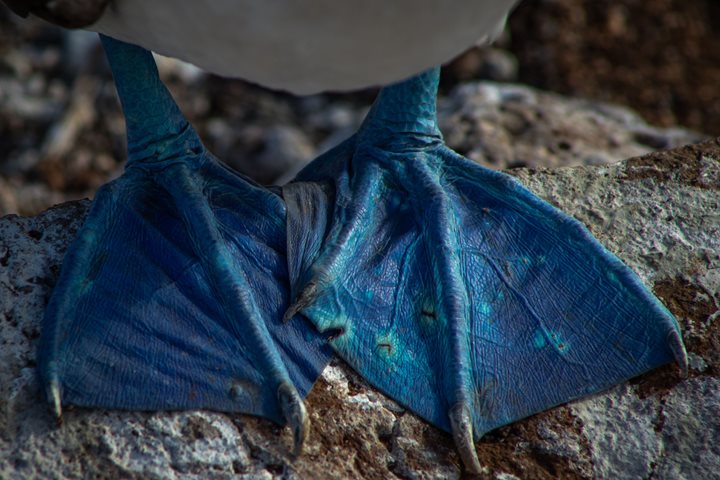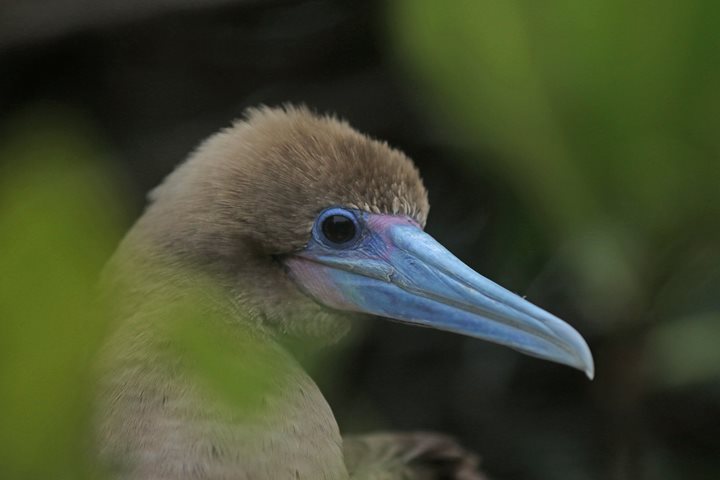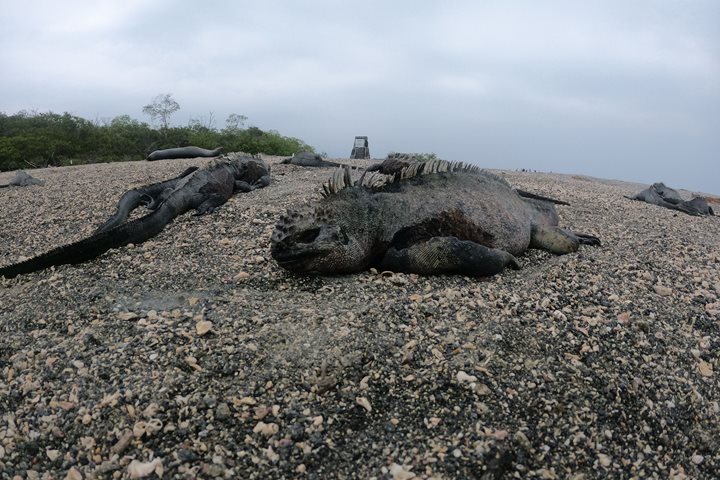We dropped anchor at Academy Bay (named after the visit of the California Academy of Sciences) at Santa Cruz Island. After having a dry landing on Puerto Ayora pier, we headed to the Charles Darwin foundation and the breeding center of the Galapagos National Park. We then arrived to the area where several corrals of giant tortoises of different species were found. Some were bred in captivity and others were rescued after the National Park Service as an institution was created in 1962. Here we can see tortoises of different kinds put together, without going to different islands.
Tortoises are a great example of adaptive radiation within island ecosystems; some lived on dry islands and developed a saddle-shaped shell, others lived on green islands and gained size and a dome shape shell. Galapagos land iguanas were also found in captivity. These yellow dragons were once upon a time bred in captivity, but at some point the program became so successful than we no longer needed to help them. We also saw some of the “main characters” found in the breeding center, like “Super Diego,” who was repatriated to the islands from the San Diego Zoo in the 1970s. He is one of the heroes that helped restore the dynasty of Espanola Giant Tortoises, from a group of only 14 surviving tortoises found left on that island.
We soon were done with the breeding center for now, and headed to the highlands of Santa Cruz Island. Some of us chose to ride bikes for about a 3 mile path along farming land and the greenery of the highlands. We got to a sugar cane press, owned by a local family. Here we learned about the processing of sugar cane products, like cane Molasses, sugar cane rum and brown sugar.
After lunch, we went to see giant tortoises in the wild. We sure saw many roaming around the grasslands of a private property that was next to the National Park territory. We also visited a lava tube here and hiked underground into the geological feature.

